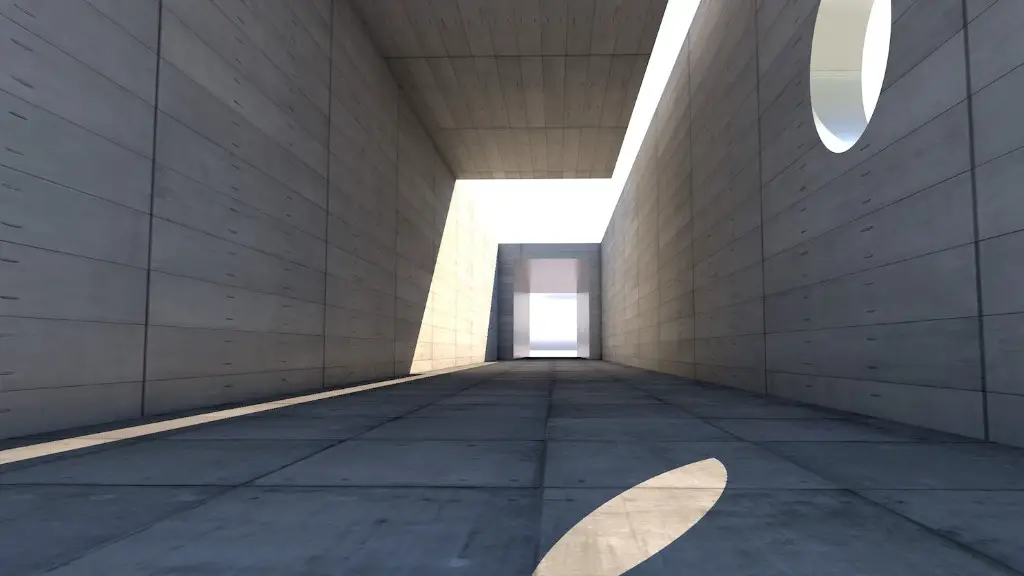The term “postmodern” has been used in a variety of ways since it was first coined in the late 1940s. In architectural circles, postmodernism began as a reaction against the stark functionalism and formalism of modernism. Postmodern architects sought to reintroduce elements of historical architecture, such as decoration and symmetry, while also incorporating new materials and technologies. The results were often playful, even irreverent, designs that jarringly juxtaposed different styles and periods. Today, postmodernism is generally used to describe a period of late-20th-century architecture, roughly from 1970 to 1990.
Postmodern architecture is a reaction to the perceived shortcomings of modern architecture. Modern architecture is characterized by its simplification of form and its use of industrial materials, which are seen as cold and impersonal. Postmodern architecture is an attempt to address these criticisms by reintroducing traditional elements such as color and ornamentation into architecture.
What defines postmodern architecture?
Postmodern architecture is a style of building design that embraces individualism and experimentation. It emerged as a movement against traditional, classical styles and sought to make buildings dynamic and fun while breaking the rules. Postmodern architecture is characterized by its use of bold colors, unconventional shapes, and a mix of different styles.
Postmodern buildings are characterized by their use of bright colors, decorative elements, and features often borrowed from earlier periods. They often have asymmetrical shapes and curves, which give them a unique and eye-catching appearance. While the colors and textures used on these buildings are often unrelated to their structure or function, they nonetheless add to the overall aesthetic of the building.
What is an example of postmodern architecture
The Vanna Venturi House is one of the first examples of postmodern architecture. Designed by Robert Venturi for his mother, Vanna Venturi, the house was built between 1962 and 1964. The house is located in Philadelphia, USA.
There are two main schools of thought in architecture: Modern and Post-modern. Modern architecture focuses on creating a relationship between the material and structure by relating and adopting them to their present technological era. Post-modernist architecture, on the other hand, emphasizes the vitality of historical elements in design.
What is postmodernism main idea?
Postmodernism is a late 20th-century movement characterized by broad skepticism, subjectivism, or relativism. It is a general suspicion of reason and an acute sensitivity to the role of ideology in asserting and maintaining political and economic power.
Postmodernism is a way of thinking that challenges the traditional views of the world. It is associated with relativism, which means that people have different ways of looking at things, and with a focus on ideology, which is a system of ideas that helps to maintain economic and political power.
What are the elements of postmodernism?
Whereas Modernism is focused on a singular central message, Postmodernism instead seeks to explore the myriad of human experiences that can often be contradictory and unstable. This results in literature that can be unfinished, fragmented, and discontinuous. There is no one specific reality possible in Postmodernism, instead, there are many different perspectives and experiences that contribute to the whole.
Postmodernism, whether it is a style or a frame of mind, and whatever its faults (and in unskilled hands, it can be truly, embarrassingly awful), had one very important effect: It freed many architects from the straitjacket of orthodox modernism. Many architects who came of age in the late 20th century were able to embrace a more diverse range of influences, from traditional forms to pop culture. This has led to a more interesting and varied landscape of architecture, and has also allowed for a more critical engagement with the modernist legacy.
What are two examples of postmodernism
Postmodern literature is often experimental and can be difficult to define. In general, it is marked by a rejection of standard conventions, such as linear storytelling and realistic characters. It often includes elements of metafiction, or stories that reference and comment on themselves.
Common examples of postmodern literature include Gravity’s Rainbow by Thomas Pynchon, Slaughterhouse-Five by Kurt Vonnegut, and Catch-22 by Joseph Heller. These novels are all highly experimental, and often use devices likestream of consciousness, nonlinear storytelling, and unreliable narrators.
Post-modernity can be seen as a response to the failures of modernity. In many ways, modernity has been “bad” for us, in that the notion of progress can lead to change, science no longer holds all the answers, and cultural debates and ideas are growing and intensifying. Social institutions are also changing, and post-modernity is a way of addressing these issues.
What is replacing postmodernism?
In a nutshell, metamodernism is the cultural code that comes after postmodernism. It is a more optimistic and forward-thinking approach that incorporates aspects of both modernism and postmodernism. At its heart, metamodernism is about progress and moving forward while remaining aware of the past and present. It is a complex and nuanced way of thinking that is still being developed and refined.
There are several characteristics of postmodern art, which include the use of text prominently as the central artistic element, collage, simplification, appropriation, performance art, and the recycling of past styles and themes in a modern-day context. These characteristics work together to create a unique art form that is both expressive and accessible.
What are the three main concepts of postmodernism
Postmodernism in Sociology refers to a set of key concepts which aim to critically examine society from a postmodern perspective. These key concepts include subject, identity, text, and symbol. On these grounds, postmodernity is often characterized as a form of social order in which electronic media play a prominent role, symbolic codes are pervasive, and social identities are fragmented.
Critics of post-modern art and literature may argue that these works lack beauty, coherence, or comprehensibility. They may also argue that these works deviate from clear structure and consist of dark and negative themes.
Why is postmodernism so important?
Postmodernism broke the established rules about style, introducing a new era of freedom where ‘anything goes’. This collapse of the distinction between high culture and mass or popular culture, and between art and everyday life, has led to a more open and inclusive society where everyone can participate in culture.
Postmodernism is a difficult concept to define because it can be seen in such a wide variety of disciplines. It can be seen in art, architecture, music, film, literature, sociology, communications, fashion, and technology. It is a concept that has been appearing in more and more areas of study, and it can be difficult to pin down a specific definition.
Conclusion
Postmodern architecture is a style or movement in architecture that began in the late 20th century as a reaction against modernism. Modernism was an architectural style that emphasized functionality and simplicity. Postmodernism, on the other hand, is characterized by a more whimsical and eclectic approach. It often incorporates elements from other styles, such as classical, baroque, or Art Deco.
Postmodern architecture is an architectural style that emerged in the mid-20th century as a reaction against the starkness and simplicity of modernism. It is characterized by a return to traditional forms and ornamentation, and a focus on surface rather than structure.





